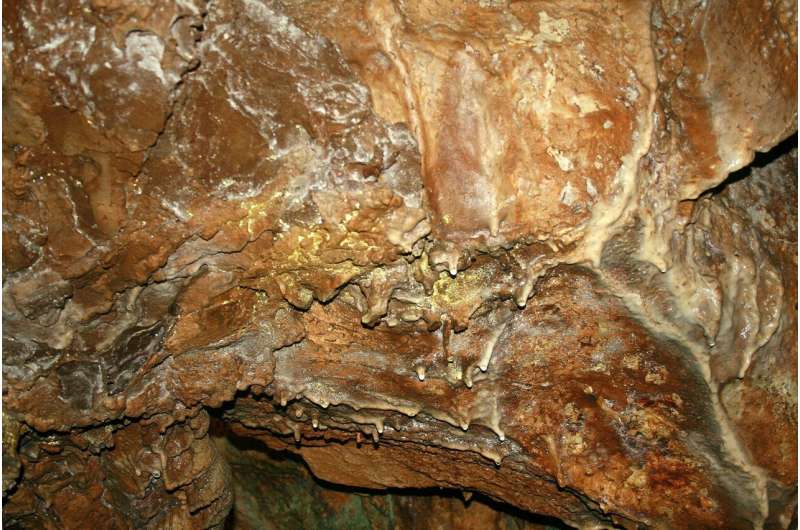Earthly lava tubes may offer insights into extraterrestrial life

Since 1997, NASA has successfully landed five rovers on Mars. The rovers have beamed back data that indicate life cannot survive on the Martian surface; we do not know whether life persists below the ground, however. For subterranean life to endure on Mars or elsewhere, microbes would have to convert—or fix—elements from their inorganic form to a usable, organic form. This skill, known as lithoautotrophy, comes in handy for Earth-bound bacteria, too—specifically for microbes living in caves. These cave environments often lack nutrients because of the absence of sunshine and organic material enjoyed by life on the surface.
In a new paper, Selensky et al. try to move us closer to understanding whether underground extraterrestrial life could exist by exploring carbon cycling in the lava caves at Lava Beds National Monument in California. As lava flows from a volcanic eruption, a stiff outer shell eventually solidifies as magma continues to flow inside, creating hollow tubes. Because lava tubes form through volcanism, they are presumed to exist elsewhere in the solar system, making them valuable models for planetary speleology.
In California, the authors examined the carbon sources used by cave bacteria living in biofilms (colorful microbial communities on the cave walls), speleothems, and soil. They compared carbon isotope signatures in bacterial fatty acids to carbon sources outside the cave.
The researchers found that the fatty acids produced by Actinobacteria in biofilms bear isotope signatures that could not derive from outside sources. In other words, the bacteria are fixing carbon in situ. In contrast, bacteria from other cave features, such as the speleothems, assimilate organic carbon derived from the surface.
The results suggest that some bacteria in basaltic cave ecosystems are fixing their carbon, which indicates that the microbes survive independently of the surface environment. The findings challenge the paradigm that all cave microbiota subsist on surface inputs. Furthermore, the authors say the conclusions have significant and positive implications for the search for extraterrestrial life.
More information: Matthew J. Selensky et al, Stable Carbon Isotope Depletions in Lipid Biomarkers Suggest Subsurface Carbon Fixation in Lava Caves, Journal of Geophysical Research: Biogeosciences (2021). DOI: 10.1029/2021JG006430
Provided by American Geophysical Union
This story is republished courtesy of Eos, hosted by the American Geophysical Union. Read the original story here.




















